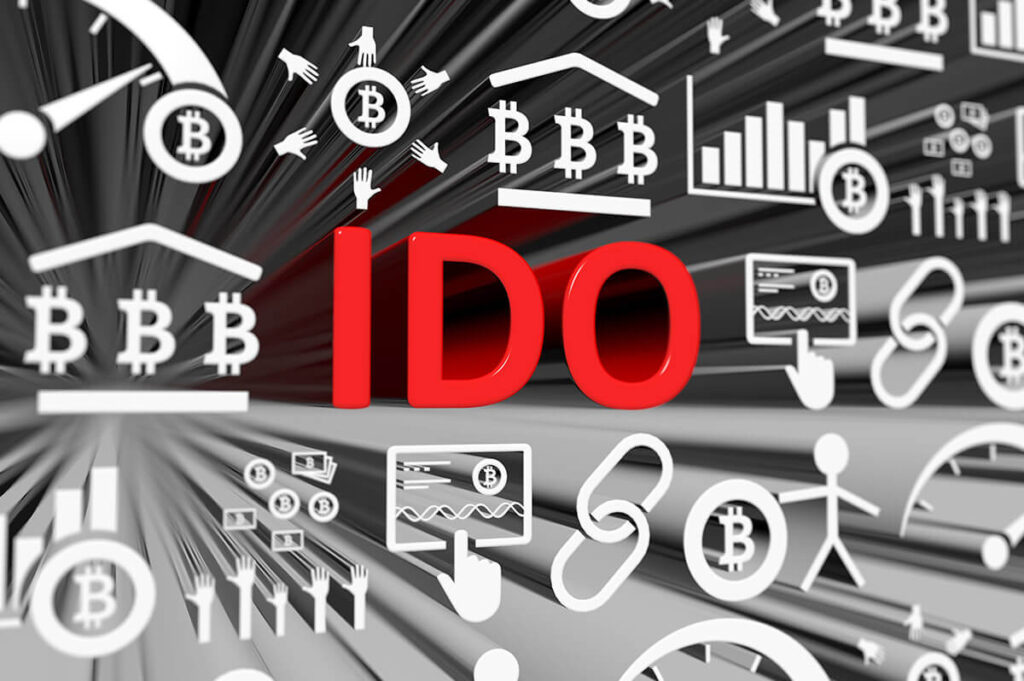Although DeFi projects diverge from conventional financial projects in many ways, one thing they have in common is the need for initial investment in order to get off the ground. Just like conventional shares, token offerings allow investors to provide seed money for new crypto companies.
Initial DEX Offerings facilitate yield farming and staking, permit investors to pay for transaction fees and allow individuals to move some of their asset portfolio onto the blockchain, avoiding the inflation and regulation of the conventional markets. Crypto IDOs are a new model for investment that look set to overtake ICOs as the DeFi market refines and improves over time. Read on for a detailed picture of the latest crypto instrument.
A next step – from IPOs to ICOs
Anyone familiar with conventional stock markets will have heard of IPOs, or Initial Public Offerings. This is when a private company becomes public by selling shares on a stock exchange, such as NASDAQ. Anyone can buy IPO shares, which allows companies to raise capital from public investors, increases transparency and develops credibility. Meanwhile, investors benefit from getting in early and purchasing shares at launch prices. With due diligence and sound investment choices, investors can see the value of the share rise as the company establishes itself on the market, and may be able to sell the shares for a much higher return at a later date.
ICOs, or Initial Coin Offerings, are the cryptocurrency equivalent of IPOs. Here a private company launches a new form of crypto asset to raise capital. This is done via their own website, with a marketing campaign based on paid advertising, forums and social media, and the creation of comprehensive whitepapers detailing the ‘tokenomics’ of the new asset and other evidence as to the viability of the project.

A new generation of security – IEOs, STOs and IFOs
Unfortunately, a lack of regulation in the ICO market has led to many instances of fraud and rug pulls. In addition, ICOs often lead to third-party discrimination and privacy issues, and they are vulnerable to human error. All this has prompted blockchain developers to think up more secure ways to raise seed funds through the sale of coins or other tokens.
IEOs, or Initial Exchange Offerings, are an attempt to build in security by selling tokens via an intermediary: a CEX, or Centralised Exchange – an organisation that facilitates crypto trading on a large scale. Investors receive unique crypto tokens in exchange for monetary investment, buying in either with fiat currency or crypto. The exchange’s valuation of projects reduces risk for the investor and increases confidence for all parties.
Meanwhile, STOs, or Security Token Offerings are another crypto investment instrument that builds confidence into the market. Here the token purchased derives value and reliability not from the reputation of the CEX, but from being founded on an underlying asset, such as stocks, bonds, funds or real estate investment trusts. In this case the token represents something with real world value, which positions them as a hybrid between an IPO and an ICO.
Initial DEX Offerings and decentralised exchanges
All this brings us to the IDO, the Initial DEX Offering. IDOs are another successor to earlier crypto fundraising models, offering a number of advantages: better liquidity, fairer issuance standards and quality assurance, thanks to a totally different launch model.
Simply put, IDOs are a form of fundraising where the asset is issued on a decentralised exchange, or DEX.
A decentralised exchange is a peer-to-peer platform, where individuals can trade crypto directly. DEXs allow transactions to be completed more quickly and cheaply than their centralised counterparts by removing the middleman, and they’re proving enormously popular, with $217bn flowing through decentralised exchanges in the first quarter of 2021.
For many crypto investors, DEXs embody one of the core values that drew them to crypto in the first place: freedom from middlemen and interference, but with additional security derived not from financial gatekeepers but from the investment behaviours of other traders.

How does it work?
Unlike centralised exchanges which let individuals buy crypto with fiat currency; decentralised exchanges only permit crypto-to-crypto trades. They don’t offer some of the advanced trading options that CEXs offer either, such as margin trading. But what they do offer is a structural advantage that sets them apart from CEXs.
Instead of handling transactions using an ‘order book’, the internal database used by CEXs that tracks trends and establishes prices in a similar fashion to conventional stock exchanges, DEXs settle transactions directly on the blockchain using smart contracts and algorithms to establish prices through another method: liquidity pools, or LPs.
These digital pools of cryptocurrency involve funds locked in via a smart contract.
They help to maintain liquidity – the ease with which an asset can be converted into another asset without affecting its current market price – by rewarding users that contribute assets to the pool with interest-like incentives. Liquidity pools play an essential role in IDO offerings, by allowing traders to swap tokens such as crypto coins and stable coins with extreme ease.
Many DEXs are also built with open-source code, which promotes innovations by allowing competitors to adapt existing code and develop their own exchanges – all very much in keeping with the ‘open doors’ spirit of decentralised finance.

So what benefits do IDOs offer?
IDOs are playing an important role as the crypto markets move towards greater security and transparency. Here are some of the crucial benefits giving them the edge:
- IDOs are a cheap and simple way for projects to distribute their own tokens, and investors to buy them. This lets new start-ups access the market without the added barrier of CEX fees.
- Investors can hold crypto securely in a personal wallet and/or private keys, often all built into one interface. In theory, this makes DEX funds less vulnerable to hackers.
- Reliable DEXs will show if a smart contract is founded on previous successful sales. This helps develop trust as traders can invest in a product that is less likely to be hijacked by bad actors.
- As IDOs immediately create a liquidity pool post sale, this reduces slippage, where the value of the asset changes before the sale completes, and volatility, the tendency of crypto assets to swing wildly in value. They also often incorporate anti-whale measures to prevent ‘rinse and repeat’ trades where crypto ‘whales’ use their immense wealth to force selling panics by withdrawing funds.
- IDO project don’t have to pay high fees or receive approval, so anyone can mint a token and create a liquidity pool for it on a decentralised exchange. This means there’s an extensive variety of IDOs available, and due diligence is therefore required on behalf of those looking to enter the market.
- Currently no sign-up details are required on DEXs, which means they offer speed and anonymity. While this might be a legitimate benefit to some, it also means IDOs attract those looking to lock up funds acquired in less legitimate ways.
- IDOs offer great benefits to the developing world. Anonymity means a low barrier to entry, and the rapid peer-to-peer lending model makes transactions easy. All you need to purchase IDOs is a smart phone and an internet connection, which makes them an intriguing option in places where conventional banking infrastructure is lacking.

Potential drawbacks of the IDO model
As parts of a decentralised, anonymous system, IDOs also pose some risks and disadvantages in comparison with ICOs.
- Without KYC (Know Your Customer) and AML (Anti-Money Laundering) regulations, IDOs are very attractive to those seeking to avoid economic sanctions or launder illegal funds.
- A lack of due diligence of projects means the onus is on the individual trader to scrutinise each offering and make their own decisions. As ever, crypto is a high-risk, high-reward investment, and this is particularly true in this instance. Traders need considerable knowledge and skill to make successful investments via DEXs, which makes them less attractive for beginner investors.
- DEXs also incur the disadvantages of blockchain wallets, notably that transactions are immediate and irreversible, making errors costly at best.
- Smart contracts, like any code, incur a risk of vulnerability to bugs, which may be exploitable by cryptocriminals. Developers simply cannot anticipate all future technical problems, human errors and hack attempts. It bears repeating that traders should never invest more than they can afford to lose in Initial DEX Offerings, as is true for all crypto ventures.
The future of IDOs
IDOs offer considerable promise, but blockchain developers and crypto experts agree that they also need further improvement. The lack of control mechanisms throughout the process reduces investor trust, and so it is likely that KYC and AML requirements might increase in future.
We are also seeing new token offering methods arising from the potentials of IDOs. IFOs, or Initial Farm Offerings, also use DEXs as a vehicle to raise seed capital for crypto projects, but using a farming strategy that not only allows investors to acquire the new token, but also earn rewards for it. Despite the DEX model being a relative newcomer in the world of crypto fundraising, the trend away from the cumbersome, unreliable ICO method seems to be creating increasingly favourable conditions for IDOs and IFOs.
Sources:
https://www.coinbase.com/learn/crypto-basics/what-is-a-dex
https://academy.binance.com/en/articles/what-is-an-ido-initial-dex-offering
https://eiftody.medium.com/how-to-protect-your-cryptocurrency-from-whale-rinse-and-repeat-trades-e07d74a7a4ea
https://coinmarketcap.com/alexandria/article/what-is-an-initial-dex-offering-ido-and-why-do-we-need-them
https://coinmarketcap.com/alexandria/glossary/initial-farm-offering-ifo
